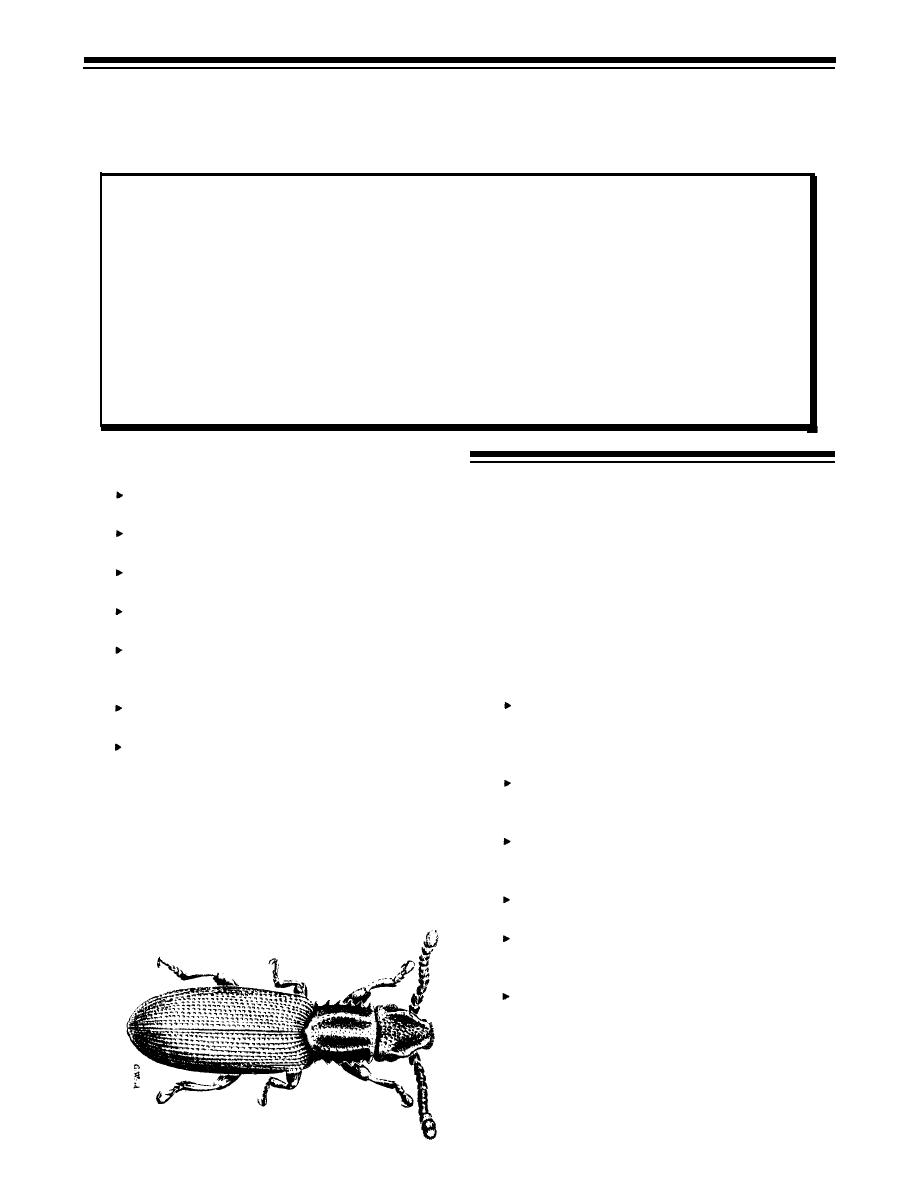

Custom Search
|
|

|
||
 CHAPTER 4
STORED PRODUCT PESTS
Learning Objectives
After completion of the study of Stored Product Pests, the trainee should be able to:
Identify common stored product pests.
Identify factors that contribute to pest infestations in stored products.
List the key features in the life cycle and habitat of common stored product pests.
Discuss monitoring and survey techniques for stored product pests including
pheromone use.
Stored products can be infested at every point
from their origin to final use; in:
CONTROL AND MANAGEMENT
the field, where the product is grown,
Inspection
picked, or harvested
In large facilities, a pest control technician will
storage bins or granaries, where it is
want to become familiar with the entire operation
held until sale
before making an inspection. The pathway a product
mills, where it is ground, mixed, or
takes is vitally important to detection. Pests can occur
packaged
in machinery, stacked products, waste dumps, delivery
warehouses, where it is held for use or
spills, etc. In homes and retail businesses, excess
redistribution
clutter, bad lighting, storage areas with blocked
food processing plants, where it is
access, and rooms located above or below infested
added to other products (e.g., candy,
materials are special target sites.
pet food, baking mixes)
All inspections should be conducted
food serving establishments, where it is
with strong flashlights. A knife, a good
prepared for public consumption
hand lens, screwdrivers and mirrors are
retail food stores, where it is sold, and
also useful equipment.
in pantries and cupboards, where it is
Flushing agents can be used, but care
held for use.
must be taken not to contaminate
The most commonly attacked products are cereal
foodstuffs.
grains, spices and nuts. Less commonly attacked are
Special attention should be given to all
dried fruits, candy, rodent bait, dried dog food, dried
spills. Check for pests, cast skins, and
decorative flowers and such diverse materials as
tracks in spilled products or dust.
museum artifacts, cosmetics, and drugs. Old,
Inspect the back of pantry shelves,
neglected, or hard-to-reach products provide the
floors under shelves, and all dark areas.
greatest potential for infestation and reinfestation.
Pheromone traps, available for nearly
all stored product pests, should be used
where routine inspections are made.
Keep detailed inspection records.
Written inspection findings and
recommendations for changes by
management or maintenance must be
clear.
Module One, Chapter 4, Pg 1
|
 
|
|
 |
||